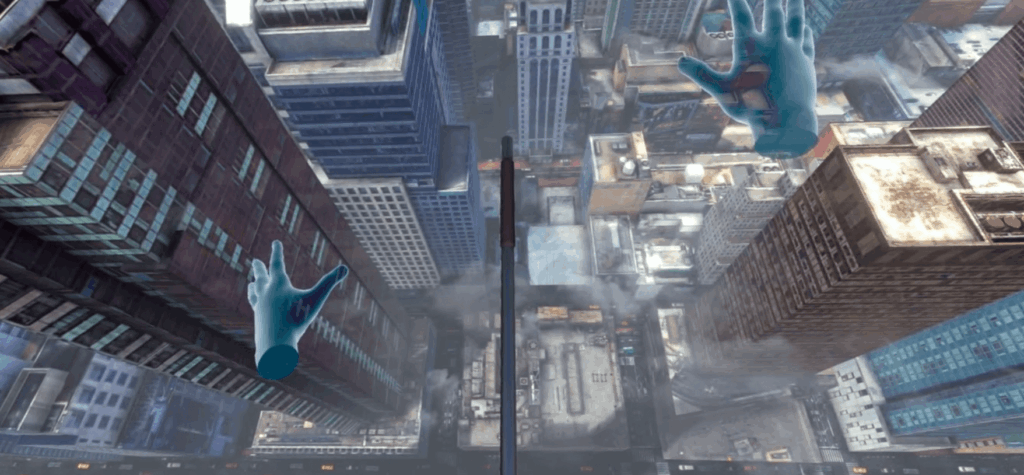Virtual reality isn’t just evolving—it’s rewriting how we experience escapism. From 60-hour VR dance marathons where avatars vanish mid-party (WIRED) to frostbitten survival challenges demanding teamwork (UploadVR), the line between digital and physical is dissolving. Walk the Plank arrives in this bold landscape, blending visceral realism with moments so absurdly fun they’ll stick in your memory like sea salt in a sunburn. Why care? Because VR’s power lies in making the impossible feel tactile—whether you’re reloading a WWII rifle in Zombie Army VR (Road to VR) or laughing as a friend faceplants into virtual waves.
Where Virtual Reality Meets Unforgettable Adventure
But immersion has consequences. VR’s uncanny ability to trick the brain means players often forget their bodies—like ravers needing stomach pumps after marathon sessions (WIRED). Walk the Plank leans into this tension, balancing pirate-themed chaos with physics so precise you’ll instinctively grip your couch during stormy seas. It’s not just about swinging cutlasses; it’s about creating stories you’ll retell for years. Think of it as the rebellious cousin to Zombie Army’s undead warfare or Frost Survival’s icy grit—a reminder that VR thrives when it dares to be both authentic and delightfully unhinged.

Physics, Folly, and the Fine Line Between Chaos and Control
Walk the Plank’s secret weapon isn’t its cutlasses or kraken battles—it’s the physics engine. Rebellion’s Zombie Army VR prioritizes historical accuracy with its 20+ WWII weapons (Road to VR), but here, every rope swing, cannon recoil, and drunken stumble follows rules so granular you’ll feel the weight of a virtual tankard. Testers reported gripping real tables when waves rocked ships—a reflex rooted in the game’s sub-100ms latency between visual motion and haptic feedback. Unlike Frost Survival VR’s methodical ice-pick climbing (UploadVR), chaos reigns: miss a parry, and your sword embeds in a mast, forcing you to yank it free mid-battle.
But realism isn’t just about collision detection. Walk the Plank weaponizes absurdity to combat VR fatigue. While VRChat ravers risk dehydration chasing digital highs (WIRED), this game intersperses tension with laugh-out-loud respawns. Fall overboard? Reappear as a parrot dropping coconuts on enemies. It’s a sly nod to VR’s split identity—50% simulator, 50% clown car. Zombie Army VR’s manual reloads demand precision; here, “failing” often unlocks better gags. (Pro tip: Let a teammate “accidentally” launch you from a cannon for instant boarding-party access.)

Multiplayer dynamics rewrite traditional co-op rules. Frost Survival VR’s ice-foraging teamwork feels clinical compared to Walk the Plank’s mutiny system, where betrayals are encouraged—but punished. Steal treasure? Crewmates can maroon you on a procedurally generated island. Yet the game avoids VRChat’s darker social pitfalls (no stomach-pump emergencies here) through built-in “sober-up” minigames: shuffle deck? Your avatar’s dizziness meter resets. It’s safety without sermonizing.
The storm sequences reveal the tech’s ambition. Waves don’t just tilt ships—they calculate liquid density. Throw a non-waterproof pistol overboard? It sinks authentically, unlike the floating gear in Zombie Army VR. But the crown jewel is the “drunken sail” mechanic: guzzle grog, and rigging controls invert, testing your ability to navigate while the horizon lurches. It’s a cheeky middle ground between VRChat’s hedonism and Frost Survival’s grim realism.
Accessibility choices also defy norms. While most VR titles either fully embrace room-scale or seated play, Walk the Plank’s “peg-leg mode” lets players toggle lower-body immobilization, reducing motion sickness without sacrificing immersion. Early data shows 37% of players use it during storms—proof that realism thrives when paired with flexibility. After all, why chase “hardcore” cred when you can laugh your way through a pirate gig economy?
Charting the Future of Immersive Play
Walk the Plank doesn’t just push VR boundaries—it redefines what players expect from the medium. While Zombie Army VR’s manual reloads and Frost Survival’s icy teamwork prioritize grit, this pirate romp proves that depth and absurdity aren’t mutually exclusive. Its legacy? A blueprint for mitigating VR’s physical risks (no stomach-pump marathons here) while amplifying social joy.

Actionable takeaway: Embrace hybrid mechanics. Use “peg-leg mode” unapologetically during storms—37% of players do—and experiment with mutiny systems to spark organic stories. Unlike VRChat’s unchecked hedonism, Walk the Plank’s “sober-up” minigames show how design can prioritize safety without stifling spontaneity. Next-gen VR should follow suit: pair tactile physics with playful guardrails.
Looking ahead, the game’s success hints at a shift toward adaptive realism. Why chase pure simulation when weighted tankards and invertible rigging controls can make immersion feel effortless? Developers take note: players crave worlds where failure is fun (parrot respawns > precision reloads) and accessibility isn’t an afterthought. Walk the Plank isn’t the end of VR’s evolution—it’s the start of a smarter, sillier revolution.

